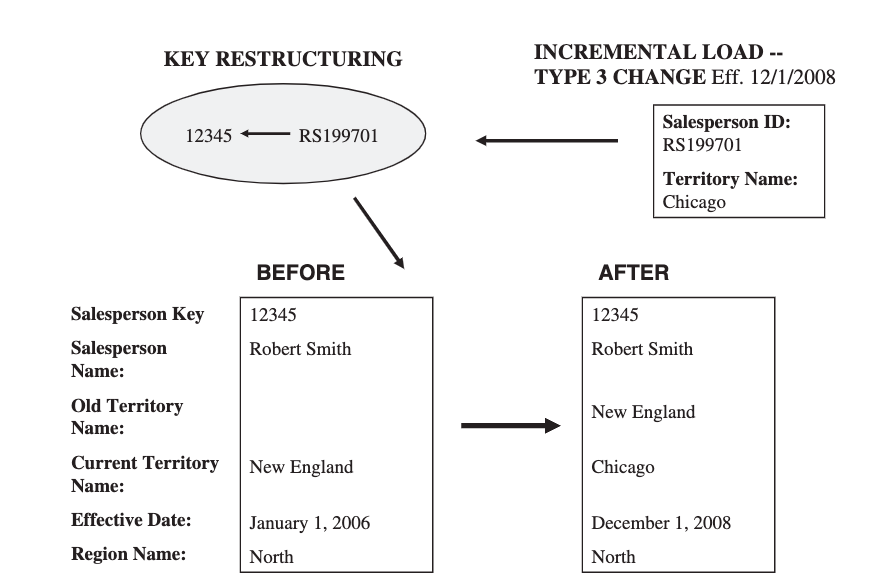The dimensions that are ought to change with time.
Changes in dimension of a Dimensional Data Model should be reflected in all transactions
Example
Techniques
Type 1
Principles
-
Usually, the changes relate to correction of errors in source systems.
-
Sometimes the change in the source system has no significance.
-
The old value in the source system needs to be discarded.
-
The change in the source system need not be preserved in the data warehouse
Technique
-
Overwrite the attribute value in the dimension table row with the new value.
-
The old value of the attribute is not preserved.
-
No other changes are made in the dimension table row.
-
The key of this dimension table or any other key values are not affected.
-
This type is easiest to implement
Type 2
Principles
- They usually relate to true changes in source systems.
- There is a need to preserve history in the data warehouse.
- This type of change partitions the history in the data warehouse.
- Every change for the same attribute must be preserved.
Technique
- Add a new dimension table row with the new value of the changed attribute.
- An effective date field may be included in the dimension table.
- There are no changes to the original row in the dimension table.
- The key of the original row is not affected.
- The new row is inserted with a new surrogate key
Type 3
Principles
- They usually relate to “soft” or tentative changes in the source systems.
- They are used to compare performances across the transition.
- They provide the ability to track forward and backward
Technique
- Add an “old” field in the dimension table for the affected attribute.
- Push down the existing value of the attribute from the “current” field to the “old” field.
- Keep the new value of the attribute in the “current” field.
- Also, you may add a “current” effective date field for the attribute.
- The key of the row is not affected.
- No new dimension row is needed.
- The existing queries will seamlessly switch to the “current” value.
- Any queries that need to use the “old” value must be revised accordingly.
- The technique works best for one “soft” change at a time.
- If there is a succession of changes, more sophisticated techniques must be devised




